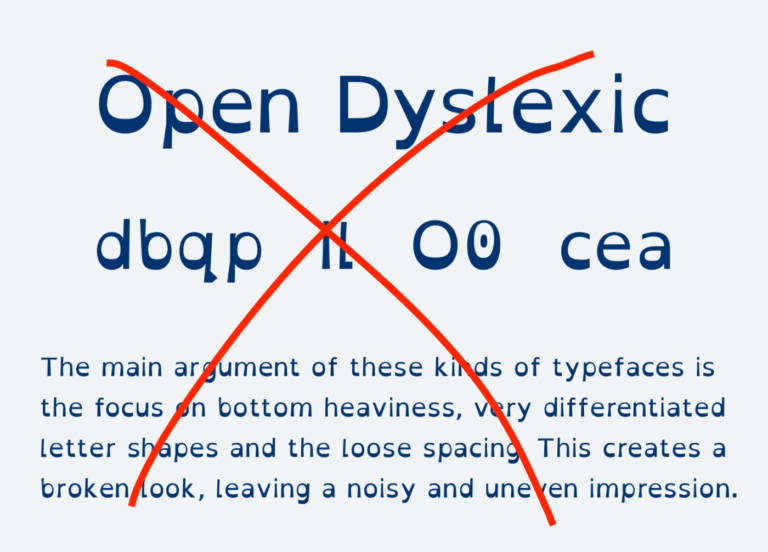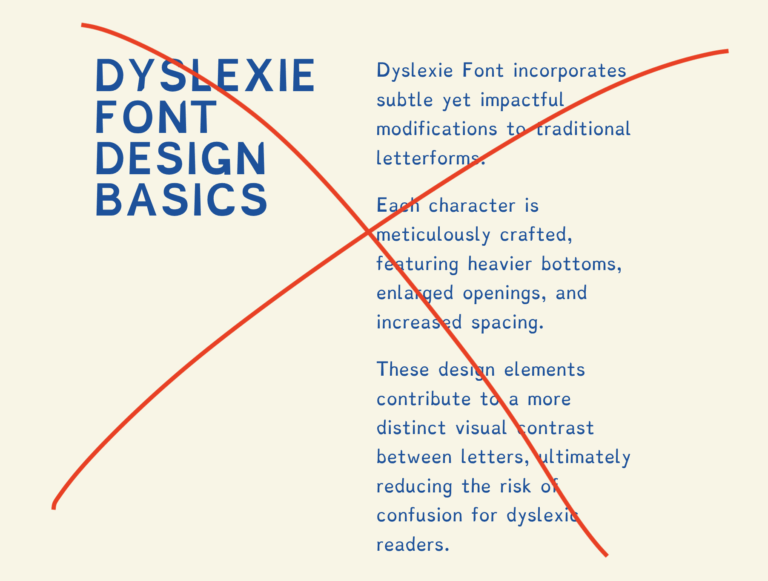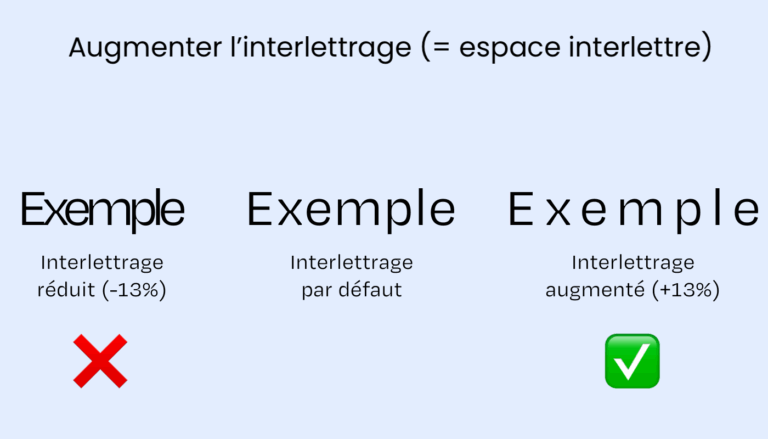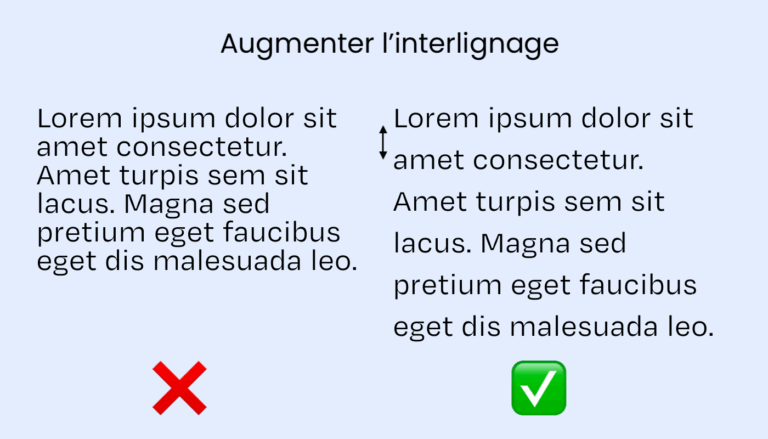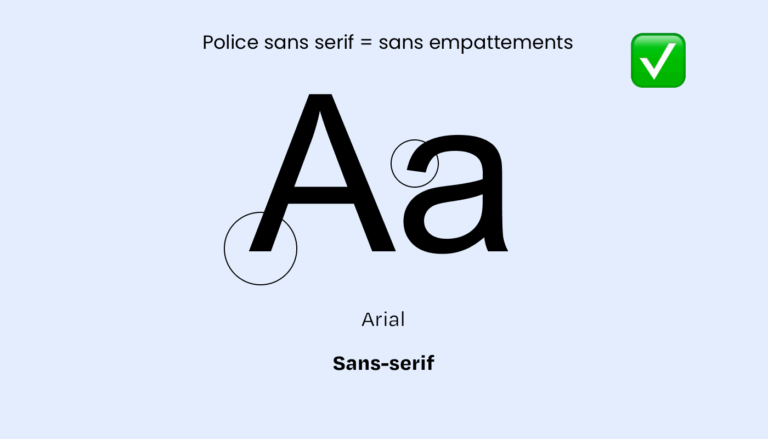Arrington, C. N., Malins, J. G., Winter, R., Mencl, W. E., Pugh, K. R., & Morris, R. (2019). Examining individual differences in reading and attentional control networks utilizing an oddball fMRI task. Developmental Cognitive Neuroscience, 38, 100674. https://doi.org/10.1016/j.dcn.2019.100674
Bachmann, C., & Mengheri, L. (2018). Dyslexia and Fonts: Is a Specific Font Useful? Brain Sciences, 8(5), 89. https://doi.org/10.3390/brainsci8050089
Barton, J. J., Sekunova, A., Sheldon, C., Johnston, S., Iaria, G., & Scheel, M. (2010). Reading words, seeing style: the neuropsychology of word, font and handwriting perception. Neuropsychologia, 48(13), 3868–3877. https://doi.org/10.1016/j.neuropsychologia.2010.09.012
Bigsby, P. (1988). The visual processor module and normal adult readers. British Journal of Psychology, 79(Pt 4), 455–469. https://doi.org/10.1111/j.2044-8295.1988.tb02746.x
Centanni, T. M., Norton, E. S., Ozernov-Palchik, O., Park, A., Beach, S. D., Halverson, K., Gaab, N., & Gabrieli, J. D. E. (2019). Disrupted left fusiform response to print in beginning kindergartners is associated with subsequent reading. NeuroImage: Clinical, 22, 101715. https://doi.org/10.1016/j.nicl.2019.101715
Duranovic, M., Senka, S., & Babic-Gavric, B. (2018). Influence of increased letter spacing and font type on the reading ability of dyslexic children. Annals of Dyslexia, 68(3), 218–228. https://doi.org/10.1007/s11881-018-0164-z
Galiano, A. R., Augereau-Depoix, V., Baltenneck, N., Latour, L., & Drissi, H. (2023). Luciole, a new font for people with low vision. Acta Psychologica, 236, 103926. https://doi.org/10.1016/j.actpsy.2023.103926
Galliussi, J., Perondi, L., Chia, G., Gerbino, W., & Bernardis, P. (2020). Inter-letter spacing, inter-word spacing, and font with dyslexia-friendly features: testing text readability in people with and without dyslexia. Annals of Dyslexia, 70(1), 141–152. https://doi.org/10.1007/s11881-020-00194-x
Hernandez, N., Andersson, F., Edjlali, M., Hommet, C., Cottier, J. P., Destrieux, C., & Bonnet-Brilhault, F. (2013). Cerebral functional asymmetry and phonological performance in dyslexic adults. Psychophysiology, 50(12), 1226–1238. https://doi.org/10.1111/psyp.12141
Jou, Y. T., & Mariñas, K. A. A. (2023). Developing inclusive lateral layouts for students with dyslexia – Chinese reading materials as an example. Research in Developmental Disabilities, 132, 104389. https://doi.org/10.1016/j.ridd.2022.104389
Kannangara, C. S. (2015). From Languishing Dyslexia to Thriving Dyslexia: Developing a New Conceptual Approach to Working with People with Dyslexia. Frontiers in Psychology, 6, 1976. https://doi.org/10.3389/fpsyg.2015.01976
Kemény, F., Banfi, C., Gangl, M., Perchtold, C. M., Papousek, I., Moll, K., & Landerl, K. (2018). Print-, sublexical and lexical processing in children with reading and/or spelling deficits: An ERP study. International Journal of Psychophysiology, 130, 53–62. https://doi.org/10.1016/j.ijpsycho.2018.05.009
Kous, K., & Polančič, G. (2019). Empirical Insights of Individual Website Adjustments for People with Dyslexia. Sensors, 19(10), 2235. https://doi.org/10.3390/s19102235
Kuster, S. M., van Weerdenburg, M., Gompel, M., & Bosman, A. M. T. (2018). Dyslexie font does not benefit reading in children with or without dyslexia. Annals of Dyslexia, 68(1), 25–42. https://doi.org/10.1007/s11881-017-0154-6
Liu, W. J., Yu, X. H., Hao, L. Y., Wang, Y. F., & Wang, J. J. (2025). Foveal crowding in children with developmental dyslexia. Annals of Dyslexia, 75(1), 96–109. https://doi.org/10.1007/s11881-024-00317-8
Lutz, C. G., Coraj, S., Fraga-González, G., & Brem, S. (2024). The odd one out – Orthographic oddball processing in children with poor versus typical reading skills in a fast periodic visual stimulation EEG paradigm. Cortex, 172, 185–203. https://doi.org/10.1016/j.cortex.2023.12.010
Marinus, E., Mostard, M., Segers, E., Schubert, T. M., Madelaine, A., & Wheldall, K. (2016). A Special Font for People with Dyslexia: Does it Work and, if so, why? Dyslexia, 22(3), 233–244. https://doi.org/10.1002/dys.1527
Masulli, F., Galluccio, M., Gerard, C. L., Peyre, H., Rovetta, S., & Bucci, M. P. (2018). Effect of different font sizes and of spaces between words on eye movement performance: An eye tracker study in dyslexic and non-dyslexic children. Vision Research, 153, 24–29. https://doi.org/10.1016/j.visres.2018.09.008
Minoofam, S. A. H., Bastanfard, A., & Keyvanpour, M. R. (2022). RALF: an adaptive reinforcement learning framework for teaching dyslexic students. Multimedia Tools and Applications, 81(5), 6389–6412. https://doi.org/10.1007/s11042-021-11806-y
Pina Rodrigues, A., Rebola, J., Pereira, M., van Asselen, M., & Castelo-Branco, M. (2019). Neural Responses of the Anterior Ventral Occipitotemporal Cortex in Developmental Dyslexia: Beyond the Visual Word Form Area. Investigative Ophthalmology & Visual Science, 60(4), 1063–1068. https://doi.org/10.1167/iovs.18-26325
Pleisch, G., Karipidis, I. I., Brauchli, C., Röthlisberger, M., Hofstetter, C., Stämpfli, P., Walitza, S., & Brem, S. (2019). Emerging neural specialization of the ventral occipitotemporal cortex to characters through phonological association learning in preschool children. NeuroImage, 189, 813–831. https://doi.org/10.1016/j.neuroimage.2019.01.046
Rose, A., Wilson, B. A., Manolov, R., & Florschutz, G. (2016). Seeing red: Relearning to read in a case of Balint’s Syndrome. NeuroRehabilitation, 39(1), 111–117. https://doi.org/10.3233/NRE-161342
Sinha, N., Nikki Arrington, C., Malins, J. G., Pugh, K. R., Frijters, J. C., & Morris, R. (2024). The reading-attention relationship: Variations in working memory network activity during single word decoding in children with and without dyslexia. Neuropsychologia, 195, 108821. https://doi.org/10.1016/j.neuropsychologia.2024.108821
Slattery, T. J., Yates, M., & Angele, B. (2016). Interword and interletter spacing effects during reading revisited: Interactions with word and font characteristics. Journal of Experimental Psychology. Applied, 22(4), 406–422. https://doi.org/10.1037/xap0000104
Stark, Z., Franzen, L., & Johnson, A. P. (2022). Insights from a dyslexia simulation font: Can we simulate reading struggles of individuals with dyslexia? Dyslexia, 28(2), 228–243. https://doi.org/10.1002/dys.1704
Wery, J. J., & Diliberto, J. A. (2017). The effect of a specialized dyslexia font, OpenDyslexic, on reading rate and accuracy. Annals of Dyslexia, 67(2), 114–127. https://doi.org/10.1007/s11881-016-0127-1
Wilson, S. M., Rising, K., Stib, M. T., Rapcsak, S. Z., & Beeson, P. M. (2013). Dysfunctional visual word form processing in progressive alexia. Brain, 136(Pt 4), 1260–1273. https://doi.org/10.1093/brain/awt034
Žarić, G., Correia, J. M., Fraga González, G., Tijms, J., van der Molen, M. W., Blomert, L., & Bonte, M. (2017). Altered patterns of directed connectivity within the reading network of dyslexic children and their relation to reading dysfluency. Developmental Cognitive Neuroscience, 23, 1–13. https://doi.org/10.1016/j.dcn.2016.11.003
Source images : medianes.org

